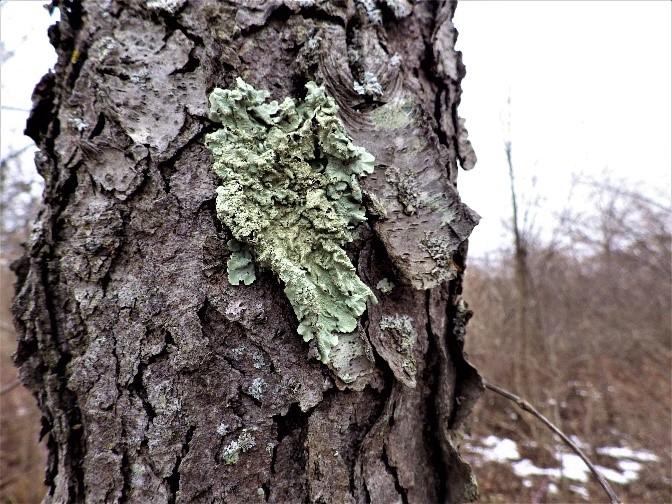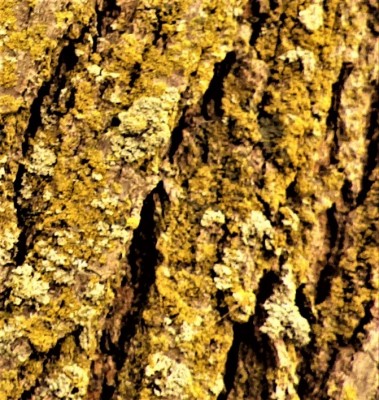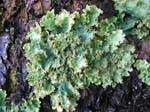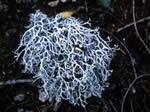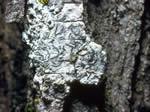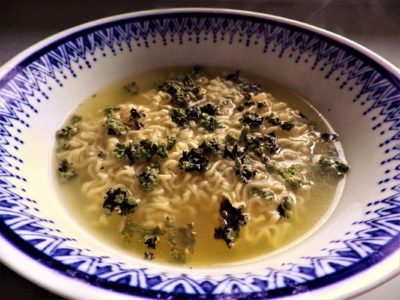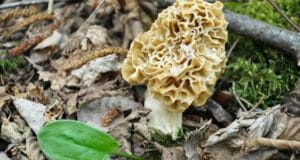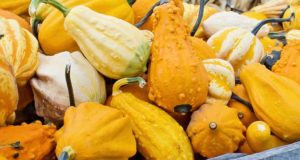We usually ignore them and don’t even notice them, but they’re one of the most primitive lifeforms on Earth. They’re also good eatin’.
They are lichens, a form of algae with a fungus membrane to support the plant. But they don’t grow in water; they grow on trees and rocks and sometimes on the ground.
Some of the lichens you see in the wild could be hundreds if not thousands of years old. That’s why you shouldn’t pick or scrape lichens arbitrarily. In a survival situation, all bets are off, but if you’re not going to eat it, respect it and leave it alone.
Most lichens are benign, a few are toxic and only a couple have been identified as poisonous. This is not as severe as the mushroom world, where there are numerous varieties that are downright deadly, but you gotta know your lichens.
In fact, only two forms of lichen out of 20,000 varieties are defined as poisonous. One is called Vulpacida pinastri and the other is called Letharia vulpina. Their common names are the powdered sunshine lichen and the wolf lichen.
Both are colored yellow and as a general rule you should avoid lichens that are yellow or orange. The wolf lichen is greenish yellow and the powdered sunshine lichen is sulfur yellow. It’s the blue and green varieties that are typically safe to eat.
Lichens 101
Before you dismiss lichens as some caveman survival food, you should know that Chef René Redzepi of the Noma restaurant in Copenhagen has touted lichens as a critical part of his cuisine. He has been identified as the top chef in the world by numerous publications and culinary organizations, and he uses lichens regularly in many of his dishes.
But you might not agree if you simply start chewing one you’ve just picked off a tree.
Get The Essential Secrets Of The Most Savvy Survivalists In The World!
According to the U.S Forest Service, here’s the dictionary definition of a lichen:
Lichens are dual organisms consisting of a fungus and an alga or a cyanobacterium. The fungus provides the alga with structure, protection, nutrients, and water absorbed from the atmosphere and the substrate (e.g., soil, rotten logs, tree branches). In return, the alga provides carbohydrates from photosynthesis to the fungus. Algae from some lichens grow independently of the fungus, but in lichen form, the algae can inhabit more challenging environments than when growing alone.
There are three types of lichens based on these photos from the U.S. Forest Service:
Wherever you live in the world you’ll probably encounter one of these types, if not all three. Northern latitudes tend to see more prolific lichen growth. That’s good news in a winter survival situation.
How Do Lichens Taste?
A raw lichen right off the tree or a rock is going to have the consistency of a rubber inner tube and taste highly acidic if not downright astringent. You have to soak them in water for hours, with frequent water changes. This will get rid of the natural acids that permeate the lichen.
A Japanese technique is to gently boil them with frequent water changes. This will result in a lichen that is quite gelatinous. In case you’re wondering, “gelatinous” means slimy, similar to the slime you see when you boil okra or cactus. It’s OK to eat it, but be prepared.
In a pure survival situation, you would soak the lichens in water with frequent water changes and eat them like potato chips. They’re going to be tough blue or green potato chips, but they’ll help to keep you alive.
In a more civilized environment, you can slice them and toss them in a pasta with olive oil, or add them to a soup or broth to thicken the soup. Even in a simple cup of chicken broth, lichens will add viscosity and body, making it sip more like a gravy than a watery broth.
In Scandinavia, lichens are often added to flour for bread-making after they have been soaked in multiple water changes and the acid has been leached out.
A modern technique is to add bicarbonate of soda in a proportion of one teaspoon to a quart of water. This will also help neutralize the acids.
In Africa, lichens were used for jelly-making with locally harvested fruits. It has the same qualities as gelatin and was also used by American pioneers prior to commercially made gelatin becoming available.
Regardless of the technique you chose to use, I would strongly recommend soaking the lichens in a bowl of vinegar for at least 30 minutes before you soak them in the water changes. Vinegar is a powerful antiseptic and will kill any germs on the lichen’s surface. That’s important because these organisms have potentially been exposed to elements for thousands of years. That gives them plenty of time to pick up some nasty microbes.
In a survival situation, you may only have water or at least boiling water to sanitize any lichen. In this instance, I would prefer lichens growing on a tree and preferably under a large, over-hanging branch. No guarantees but it may have had less exposure to the elements in this kind of environment as opposed to lichens growing on rocks.
Nutritional Value
The nutritional value varies, depending on the species and the amount. Generally, lichens have some of the nutritional benefits of a well-known form of algae called “spirulina.” It has vitamins like vitamin K and vitamin C, some carbohydrates and a fairly good calorie count based on the size.
Harvesting Lichens
Older, more mature trees tend to provide the most lichens. This is because it takes them so long to grow. Rocks and cliff faces also will provide lichens. On a canoe trip in Canada I remember seeing a large slab of granite on the shoreline covered in lichens like a patchwork quilt. Just make sure you stay away from the yellow and orange ones.
The best tool for lichen collecting is a knife. You have to cut it away from the rocks or trees. They come off simply, but most tree lichens will have some tree bark attached. The external tree bark of any tree is indigestible, so try to shave it away. I’ve sometimes used my thumbnail to do this.
However, winter presents some unique problems. The lichens are typically frozen. You may want to grab more bark from a tree and deal with it after you’ve soaked it. The same is true for rock lichens.
To preserve lichens for future use, sanitize them in vinegar for 30 minutes, do numerous soaks in water changes for a few hours, and then dry them in a food dehydrator. When it’s time to eat, rehydrate them in cold or gently boiling water.
Lichen Recipes
There are two lichen recipes that I make from time to time:
Lichen Ramen Soup
- 1 package of Ramen noodles plus broth seasoning
- 2 cups of water
- 1 cup of lichens soaked in water changes and cut into julienne strips
- 1 teaspoon of soy sauce
Directions
Soak the lichens in vinegar for 30 minutes and then put them through continuous water soaks for about 4 hours, changing the water every hour. Add the two cups of water to a saucepan and then add the Ramen soup flavoring packet. While you’re waiting for the water to come to a boil, slice the lichens into thin strips. Add the noodles to the water when it’s boiling and then add the lichen strips. When done, spoon and serve into bowls.
Lichen Pasta
Ingredients
- 1 quart of water
- 1 tablespoon of salt
- 12 ounces of pasta (any variety)
- 3 tablespoons of olive oil
- ½ cup of parmesan cheese
- 1 cup of thin sliced or julienned lichens
- 1 tablespoon of parsley
Directions
Prepare the lichen as indicated previously in rinses of vinegar followed by rinses of water. Add water and salt to the pot and bring to a boil. Then slice the lichens and set aside. Add the pasta to the boiling water and cook until done. Drain the pasta and toss with the olive oil, parmesan cheese, lichens and top with parsley. Serve.
Have you ever eaten lichen? What advice would you add? Share it in the section below:
Learn How To ‘Live Off The Land’ With Just Your Gun. Read More Here.
 Off The Grid News Better Ideas For Off The Grid Living
Off The Grid News Better Ideas For Off The Grid Living

